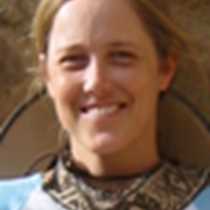La Conte Bay & Petersburg
Though it is ethically difficult to compare something so naturally beautiful to something so essentially artificial, cotton candy is the first thing we thought of in describing the color of the icebergs floating in the mouth of La Conte Bay. This morning we cruised through a veritable gallery of hundreds of blue ice sculptures. We marveled at the many shades of blue and the shapes of all kinds of typically lively things now inanimate. That is until a precarious piece of an iceberg calved off and the entire berg began to rock back and forth like a giant sea saw.
In the midst of this heaviness imposed upon us by these massive icebergs, animal activity seemed always to catch our attention. Tern-like Bonaparte’s gulls and glaucous-winged gulls fluttered above the surface of the water intermittently scooping up small schooling fish. A flock of humorless clowns, nervous harlequin ducks, scuttled this way and that before taking flight in a synchronized dance of uncertainty. Bald eagles stole the show, however, in landing on great pieces of floating ice. They were also diligently fishing the mysterious murky water.
One of Southeast Alaska’s prominent fishing villages, Petersburg, was our afternoon destination. Many of us ventured through town via bicycle or by foot. Others traveled by Zodiac to the other side of Wrangell Narrows for walks to the bog. The path started out on an old logging road. The forest was mostly even-aged second growth. Very little ground vegetation survived in such a dense, dark forest. Further along, however, the trail meandered through a section of the forest untouched by the loggers. The canopy opened up and light streamed down allowing blueberries, 5-leaved bramble and dwarf dogwood to flourish.
In gaining slightly more elevation, we finally encountered a seemingly unnatural habitat, the bog. Here we found miniature trees, tiny plants and a lot of standing water. Unable to subsist on the acidic water from which they grow, the plants here survive mostly on rainwater and rely on specialized techniques for acquiring nutrients. One of the most unique adaptations to this harsh environment is in living as carnivores as is the case of the tiny pink sundews. Their leaves contain hundreds of tiny droplets of sticky dew that capture unsuspecting insects of which they later digest. Another adaptation plants have is in containing anti-herbivore compounds and thus relatively few mammals venture into this habitat. However, some of us were fortunate to have come across a Sitka black-tailed deer nibbling on deer cabbage.
The day ended with a feast of crabs and ribs. From cotton-candy blue colored ice to carnivorous plants, nothing could have felt more natural than eating with our hands!
Though it is ethically difficult to compare something so naturally beautiful to something so essentially artificial, cotton candy is the first thing we thought of in describing the color of the icebergs floating in the mouth of La Conte Bay. This morning we cruised through a veritable gallery of hundreds of blue ice sculptures. We marveled at the many shades of blue and the shapes of all kinds of typically lively things now inanimate. That is until a precarious piece of an iceberg calved off and the entire berg began to rock back and forth like a giant sea saw.
In the midst of this heaviness imposed upon us by these massive icebergs, animal activity seemed always to catch our attention. Tern-like Bonaparte’s gulls and glaucous-winged gulls fluttered above the surface of the water intermittently scooping up small schooling fish. A flock of humorless clowns, nervous harlequin ducks, scuttled this way and that before taking flight in a synchronized dance of uncertainty. Bald eagles stole the show, however, in landing on great pieces of floating ice. They were also diligently fishing the mysterious murky water.
One of Southeast Alaska’s prominent fishing villages, Petersburg, was our afternoon destination. Many of us ventured through town via bicycle or by foot. Others traveled by Zodiac to the other side of Wrangell Narrows for walks to the bog. The path started out on an old logging road. The forest was mostly even-aged second growth. Very little ground vegetation survived in such a dense, dark forest. Further along, however, the trail meandered through a section of the forest untouched by the loggers. The canopy opened up and light streamed down allowing blueberries, 5-leaved bramble and dwarf dogwood to flourish.
In gaining slightly more elevation, we finally encountered a seemingly unnatural habitat, the bog. Here we found miniature trees, tiny plants and a lot of standing water. Unable to subsist on the acidic water from which they grow, the plants here survive mostly on rainwater and rely on specialized techniques for acquiring nutrients. One of the most unique adaptations to this harsh environment is in living as carnivores as is the case of the tiny pink sundews. Their leaves contain hundreds of tiny droplets of sticky dew that capture unsuspecting insects of which they later digest. Another adaptation plants have is in containing anti-herbivore compounds and thus relatively few mammals venture into this habitat. However, some of us were fortunate to have come across a Sitka black-tailed deer nibbling on deer cabbage.
The day ended with a feast of crabs and ribs. From cotton-candy blue colored ice to carnivorous plants, nothing could have felt more natural than eating with our hands!




